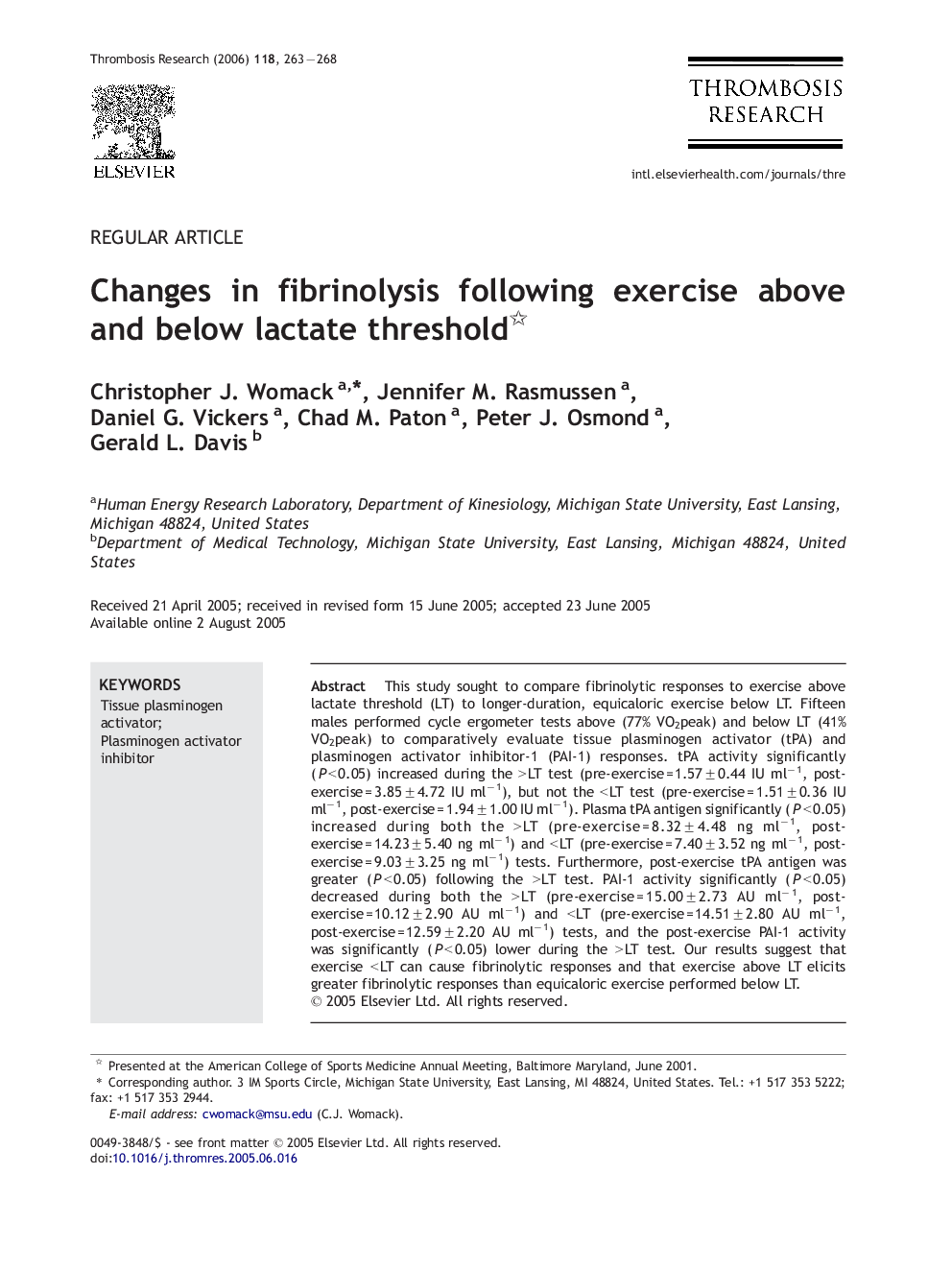| Article ID | Journal | Published Year | Pages | File Type |
|---|---|---|---|---|
| 3030362 | Thrombosis Research | 2006 | 6 Pages |
This study sought to compare fibrinolytic responses to exercise above lactate threshold (LT) to longer-duration, equicaloric exercise below LT. Fifteen males performed cycle ergometer tests above (77% VO2peak) and below LT (41% VO2peak) to comparatively evaluate tissue plasminogen activator (tPA) and plasminogen activator inhibitor-1 (PAI-1) responses. tPA activity significantly (P < 0.05) increased during the > LT test (pre-exercise = 1.57 ± 0.44 IU ml− 1, post-exercise = 3.85 ± 4.72 IU ml− 1), but not the < LT test (pre-exercise = 1.51 ± 0.36 IU ml− 1, post-exercise = 1.94 ± 1.00 IU ml− 1). Plasma tPA antigen significantly (P < 0.05) increased during both the > LT (pre-exercise = 8.32 ± 4.48 ng ml− 1, post-exercise = 14.23 ± 5.40 ng ml− 1) and < LT (pre-exercise = 7.40 ± 3.52 ng ml− 1, post-exercise = 9.03 ± 3.25 ng ml− 1) tests. Furthermore, post-exercise tPA antigen was greater (P < 0.05) following the > LT test. PAI-1 activity significantly (P < 0.05) decreased during both the > LT (pre-exercise = 15.00 ± 2.73 AU ml− 1, post-exercise = 10.12 ± 2.90 AU ml− 1) and < LT (pre-exercise = 14.51 ± 2.80 AU ml− 1, post-exercise = 12.59 ± 2.20 AU ml− 1) tests, and the post-exercise PAI-1 activity was significantly (P < 0.05) lower during the > LT test. Our results suggest that exercise < LT can cause fibrinolytic responses and that exercise above LT elicits greater fibrinolytic responses than equicaloric exercise performed below LT.
